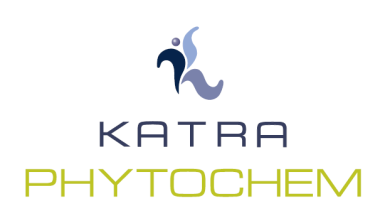

Lutein Ester
Other Research Topics
Lutein Esters is a form of Lutein having one or more fatty acid chain attached through the end hydroxyl groups of free Lutein.

The distribution of fatty esters available in the marigold is in the following sequence
The predominant is the Lutein Dipalmitate. The others are
Lutein Dimyristate
Lutein Myristate Palmitate
Lutein Palmitate stearate
Lutein Distearate
And traces of other mono myristate and stearate.
Lutein ester from Marigold is the same as the lutein esters found in fruits and vegetable such as: oranges, mangoes, papayas and peppers. These lutein esters are converted naturally by the human body to Lutein through insitu enzymatic hydrolysis and there are studies to demonstrate the bioavailability of Lutein esters through complex digestion process.
The typical study:
“Esterification Does Not Impair Lutein Bioavailability in Humans1” by
Phyllis E. Bowen,2 Suzanne M. Herbst-Espinosa, Erum A. Hussain
and Maria Stacewicz-Sapuntzakis, Department of Human Nutrition, University of Illinois at Chicago, Chicago, IL, suggests the bioavailability of Lutein esters.
Recommended daily intake:
The molecular weight of Lutein esters will be almost double as that of Lutein. Therefore, 2mg of Lutein esters will be almost equivalent to 1.0mg of Lutein. To get the required dose of 6-10mg/day of Lutein, one should consume 12 - 20mg of Lutein esters.
The predominant is the Lutein Dipalmitate. The others are
Lutein Dimyristate
Lutein Myristate Palmitate
Lutein Palmitate stearate
Lutein Distearate
And traces of other mono myristate and stearate.
Lutein ester from Marigold is the same as the lutein esters found in fruits and vegetable such as: oranges, mangoes, papayas and peppers. These lutein esters are converted naturally by the human body to Lutein through insitu enzymatic hydrolysis and there are studies to demonstrate the bioavailability of Lutein esters through complex digestion process.
The typical study:
“Esterification Does Not Impair Lutein Bioavailability in Humans1” by
Phyllis E. Bowen,2 Suzanne M. Herbst-Espinosa, Erum A. Hussain
and Maria Stacewicz-Sapuntzakis, Department of Human Nutrition, University of Illinois at Chicago, Chicago, IL, suggests the bioavailability of Lutein esters.
Recommended daily intake:
The molecular weight of Lutein esters will be almost double as that of Lutein. Therefore, 2mg of Lutein esters will be almost equivalent to 1.0mg of Lutein. To get the required dose of 6-10mg/day of Lutein, one should consume 12 - 20mg of Lutein esters.
About Us
With over 5000 contract farms, a Worldclass cGMP Compliant Manufacturing Facility in Attibele and dedicated Oleoresin Manufacturing Plants, we have complete control over the entire value chain.

Lutein: Lutein is chemically hydrolyzed form of Lutein Esters. They are also naturally available in the free form especially in corn. In Marigold it is predominantly available with Zeaxanthin. It is mostly available in Trans form. The other form is cis form which is available in traces.
Zeaxanthin: Zeaxanthin is a geometrical isomer of Lutein. It is available in 3 forms, Trans- Zeaxanthin [3R-3R’], Meso-Zeaxanthin [3R-3S’] and [3S-3S’].







